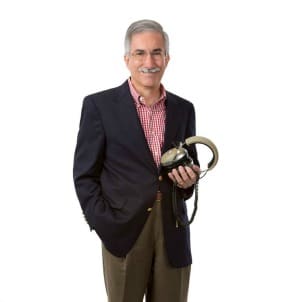
A week ago Friday, on January 29, a small but significant slice of broadcast station owners, engineers, and lawyers went wild, filing some 416 or so FM translator modification applications on Day 1 of the 250-mile move filing window.
The first modification application that day to propose a move of an FM translator to carry an AM station, filed presumably at moments after midnight, was from respected and successful small-market-group owner Art Sutton, proposing a move of a Bryson City, North Carolina, FM translator a distance of 56.9 miles to carry his WSNW(AM), Seneca, South Carolina, as the primary station.
Much of the first-day filing urgency was driven by a concern that the best FM translator frequencies would be taken by other eligible AM stations if not immediately claimed. While there were some mutually-exclusive conflicting applications filed, for the most part applicants were pleased to find, as application data was released by the FCC, that most applications were “singletons” (in long-standing FCC parlance, being without a conflict).
The FCC’s Audio Division staff is to be commended for, both prior to and during the 250-mile window, a timely responsiveness to questions and a capable managing of the FCC’s database systems making application information available to the public the next day. While the FCC’s CDBS has on occasion in the past been recalcitrant and balky when large numbers of applications were filed, this time the FCC’s filing system appeared to operate without any issues.
From a review of the FCC’s database, it appears that the Audio Division is now moving forward with processing many of the pending FM translator applications filed prior to January 29, presumably in an effort to clear the decks. With the applications filed on January 29, the FCC has already dismissed three applications, two at the applicants’ request, and one for specifying an AM station other than a local Class C or daytime-only Class D AM station (until July 29, only applications proposing Class C or Class D AMs as the primary station are eligible for filing).
The Audio Division informally advises that, sometime in this coming week, it expects to start reviewing the 400+ January 29 applications in earnest, processing them substantially in file-number order, with a goal of processing the majority of them by the end of March. WSNW(AM), which as noted above filed the first application of the day on January 29, is likely to receive one of the first grants if the applications are processed in file-number order, presumably making Mr. Sutton’s long evening, or very early morning rise, worthwhile.
Applications that remain mutually exclusive cannot be granted. It will be up to the applicants themselves to engineer a technical or other solution to remove the conflict.
There are 90% or so of AM stations that have not filed in the 250-mile window. Many, of course, are regional Class B and clear-channel Class A AM stations that must wait until July 29 to file. Other AM stations, particularly in spectrum-available areas, are likely to wait until the 2017 FM translator auction filing window.
LPFM proponents recently asked for the opportunity to file for FM translators in the 2017 auction filing window. If the FCC takes the LPFM proposal seriously, it could either slow the opening of the 2017 window or lead to increased competition for available FM translator frequencies.
The 250-mile window remains open until October 31, 2016, with Class B and Class A AM stations eligible to file an FM translator move application commencing on July 29. It is likely that additional 250-mile window applications will trickle in over the next several months as AM stations identify FM translators available at reasonable prices. There are permittees of unbuilt FM translator construction permits, with hard imminent expiration dates, that will be worthless unless built or extended as part of a modification under the FCC’s 250-mile window. Those translator construction permits, in particular, would appear to be a source for AM stations still searching for reasonably-priced available FM translators.
One final issue for the 400+ broadcasters who filed for FM translator moves on January 29 is the immediate availability of antennas and transmitters. FM translator applications are different than full-power FM stations in that the make and model of the transmitting antenna is specified in the construction permit application itself. Once your attorney and engineer confirm that your 250-mile window application is non-conflicting and otherwise appears headed for a grant, it may be prudent to get in line for the needed transmitting antenna and transmitter as there are likely to be 400 or so other anxious AM stations each searching at the same time for transmitting antennas and transmitters.
Commissioner Pai first proposed AM revitalization at the 2012 NAB Radio Show. It is worth noting what heritage broadcaster and long-time AM proponent Bud Walters of the Cromwell Group observed back then about the “dramatic difference” FM translators made, in advocating for the FCC to allow for greater moves of FM translators to serve AM stations:
“AMs have suffered diminished revenue not only due to the technical challenges to AM reception but also as a result of the public’s perception of AM. When advertisers have the perception that people are not listening to AM stations, it is next to impossible to bring in enough revenue to support even minimal programming on an AM station. The carriage of an AM station on an FM translator makes a dramatic difference.”
Those AM stations who now obtain FM translators will echo Bud’s observation. Soon, there will be several hundred more AM stations enjoying the “dramatic difference” of FM translators as a result of the FCC’s action in opening the 250-mile window.







The FCC should start issuing CPs for 87.9 MHz & 87.7 MHz in areas with no TV6
This assisting AM owners with an FM translator is all well and good, but let’s be clear:
It “helps” AM-only owners and it probably “helps” listeners of those AM stations if the station’s signal is marginal, particularly at night, but by moving listenership from AM to FM, it doesn’t “help” AM. Net listenership to the AM band stations will likely decrease substantially with duplicate programming available on a companion FM local translator.
Look for surviving AM stations whose audience has migrated to an FM translator to be the victim of engineering neglect and near-abandonment through lack of promotion throughout the companies. A downward spiral has begun.
many fm translators are owned by private individuals and those in small towns are dependent on those translators for information,, many translator licensees have been offered to sell,, they do and the translators are moved away to a city,, the small town loses service,, however the allocation is still good,, hopefully the translator will remain on (illegally) and the small town wont lose service,, it seems that the simple way would have been for the urban station just to apply and pay the fcc app fee, and leave the very rural translators alone,, another great commission idea,,